Now it’s official! The Moog One Synthesizer has landed and it’s the first polyphonic analog Synthesizer in over three decades by Moog Music!
In the last months, there were many rumours about a new analog polyphonic Synthesizer from Moog Music. In recent days, these rumours have been condensed and now it’s official. The name “Moog One” sounds monophon but it’s a new poly Synth. Moog One is a tri-timbral polyphonic analog Synthesizer that features 3 newly-designed analog VCO’s, 2 distinctive analog filters and a unique dual source analog noise generator. It features also a extensive set of modulation and effects processing options that includes a suite of professional reverbs rom Eventide.
Moog One also has everything that a modern analog polyphonic synth must have: presets, wide range of analog & digital connectivity including CV/Gate, USB…, a X/Y for expressive playability & more. What is not mentioned in the official information is that the Moog One uses an embedded Linux which takes over certain digital aspects. There is also a video from the ADC17 conference where the developers talked about it.
For a starting price of $5999 USD, the new Moog Poly synth is not a synth for everyone but one that shows what a high-end Synthesizer should look like in 2018: very elegant and massive design, straightforward designed interface, knobs for near every parameter, fat sound quality, high-end build-quality, fatar keybed etc.
Overview
Moog One is the ultimate Moog synthesizer – a tri-timbral, polyphonic, analog dream-synth designed to inspire imagination, stimulate creativity, and unlock portals to vast new realms of sonic potential. The first polyphonic analog synthesizer from Moog in more than three decades, Moog One is the culmination of years of research and has been developed to exceed principal expectations of a polyphonic Moog instrument.
Available in 8-voice and 16-voice configurations, Moog One’s polyphonic sound engine is built on the most powerful synthesizer architecture ever employed by a Moog instrument. Per voice, Moog One offers 3 newly-designed analog VCOs, 2 independent analog filters, a dual source analog noise generator, analog mixer with external audio input, 4 LFOs, and 3 envelopes. To deliver an infinitely inspiring performance experience, each of the three timbres can be easily split or layered across Moog One’s expressive 61-note keyboard, each with its own sequencer, arpeggiator, and onboard effects library–including a suite of professional reverbs from Eventide®.
Secured in a hand-finished Ash cabinet and aluminum enclosure, Moog One’s front panel is equipped with 73 knobs and 144 buttons, inviting physical connection with every sound shaping and performance control. Extended functionality is easily accessed via a per-module “More” button that brings additional parameters into focus using the Moog One center-panel LCD to ensure the most transparent and expedient sound creation experience possible.
Moog One is an unprecedented conduit for the expression of your own creative voice. Sculpt, shape, and transform your own sound with nearly infinite possibilities.
Features
- Triangle core oscillators: Each Moog One voice employs three newly developed triangle core analog VCOs. The output of each oscillator is a user-defined mix of the selectable triangle / sawtooth wave, plus a variable-width pulse wave. Expanding beyond traditional oscillator designs, the rise/fall time of the triangle wave and the reset phase of the sawtooth wave can be shaped and modulated to create to a rich palette of classic analog tones. Blending the tri/saw and pulse waves together opens new dimensions of harmonic freedom, creating complex waveforms not typically found in analog synthesizers. The Moog One oscillator section is also equipped with hard sync, analog ring modulation, and FM for boundless analog sound generation
- Dual source noise generator: Each Moog One voice includes an advanced dual-source analog noise generator that allows different colors of noise to be selected and mixed, while and dynamically articulated utilizing the dedicated noise envelope generator. This unique module is a powerful tool for adding percussive attacks, breath, or full-body impact to a sound.
- Mixer: Moog One offers a flexible analog mixer, providing volume controls and filter routing selections for each oscillator, noise generator, ring modulator, and external audio input — sound sources can be shaped by different filters independently, or at the same time
- Ladder & state variable filters: There are two types of analog filters in Moog One. The first is a newly-designed multimode State Variable Filter that brings razor-like precision and articulation to the instrument. The second is a classic Moog Ladder filter with selectable low pass / high pass behavior. These two filters can process sounds individually or together, in series or parallel operation, to access a vibrant spectrum of classic, obscure, and completely new filter sounds.
- Low frequency oscillators: Cyclical motion within Moog One is generated by 4 wide-range LFOs that can be assigned to nearly any destination. Capabilities include MIDI synchronization and clock division, start delay time, number of repeats per instance, fade in and out time, and much more.
- Envelopes: Dynamic sound shaping within Moog One comes via its 3 assignable DAHDSR Envelopes (Delay, Attack, Hold, Decay, Sustain, Release). In addition to looping, synchronization, and time scaling capabilities, the character of each envelope can be user-sculpted through utilization of per-stage envelope curves.
- Modulation: Easily create modulation assignments from any of Moog One’s 4 LFOs and 3 EGs by pressing their corresponding Destination Button — the next knob touched sets the modulation path and amount. For more complex modulation options, Moog One also employs an internal Modulation Matrix with visual access to every possible combination of the instrument’s extensive synthesis and controller components.
- Synth effects, master bus effects & Eventide Reverbs: Moog One features a growing library of programmable per-synth effects and master bus effects that include chorus, delay, phase, bit reduction, vocoding, and a suite of premium reverbs from Eventide® including Blackhole, Shimmer, Plate, Room, and Hall. Effects can be applied in two ways: as Synth Effects and Master Bus Effects. Synth Effects are applied to individual layers of timbrality, while Master Bus Effects can be applied via sends to all three Synthesizers. Though its onboard effects are digital, Moog One retains a completely analog signal path with no in-line conversion when insert effects are off.
- Tri-timbrality and unison mode: Comprised of three independently addressable analog polysynths, the tri-timbral Moog One design allows voices to be easily assigned, split, layered, or stacked with up to 48 oscillators in Unison Mode. Additionally, each synthesizer is equipped with its own fully-featured step sequencer, arpeggiator, and effects processor. Multitimbral synthesis is simplified through the Moog One ‘Panel Focus’ module. Selecting a Synth for Panel Focus causes the Moog One front panel knobs and buttons to switch control to that layer of timbrality. Users can also select multiple layers at once for simultaneous adjustment of multiple Synthesizers.
- Keyboard & X/Y Pad: Moog One’s premium 61-note Fatar TP-8S keyboard with velocity and aftertouch ensures a balanced and dynamic playing experience for any user. In addition, milled aluminum pitch and mod wheels and a pressure-sensitive X/Y pad provide a fully assignable means of emotive expression and continuously variable control.
- More button: Nearly every module is equipped with a triangular “More” button in the upper right corner. When “More” is pressed, the Moog One LCD screen reveals additional parameters specific to that module, accessing deep-level features and advanced controls.
- Snapshots: When exploring a sound, pressing the Snapshot Button allows Moog One to easily capture and recall a time-stamped picture of a preset at its current settings, removing the need to continually save data manually while experimenting with new ideas.
- Configurations: Moog One is available in 8 or 16-voice configurations only. Upgrades from 8 to 16 voice units are not available at the present time
A film introducing the new Moog One Polyphonic Analog Synthesizer, the first analog polysynth released from Moog in over 35 years. Shot on both 8mm film and contemporary digital video, the film is a modern re-imagining of the original 1976 demo video for the Polymoog, Moog’s first polyphonic synthesizer.
Exploring the electronic sound of the Moog One, and the transformational power of Listening, the film features some of the world’s most accomplished and creative artists: Jeff Bhasker, Suzanne Ciani, Chick Corea, Mike Dean, Robert Glasper, Dick Hyman, Dev Hynes, Mark Mothersbaugh, Mark Ronson, Ryuichi Sakamoto, Dr. Lonnie Smith, and Paris Strother.
Moog Music Moog One Synthesizer is available now for $5999 USD for the 8-voice and $7999 USD for the 16-voice.
More information here: Moog Music

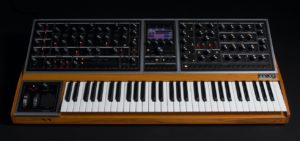

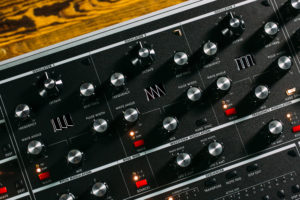
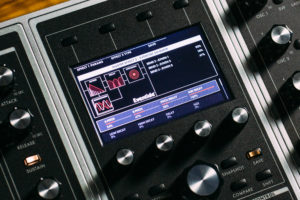
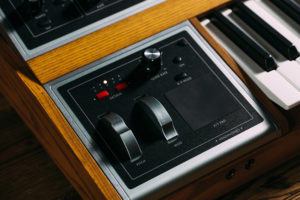

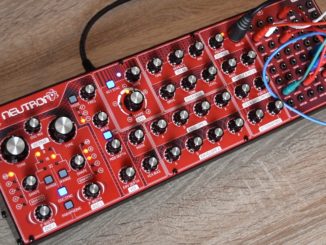

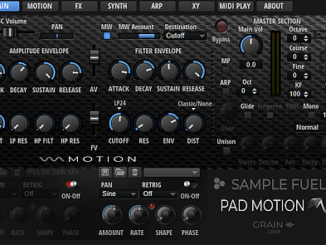
Be the first to comment